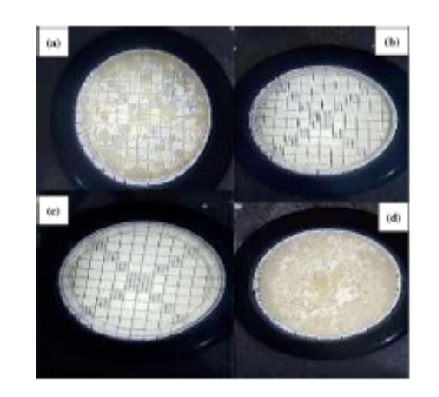


Indian Journal of Science and Technology
Year: 2023, Volume: 16, Issue: 45, Pages: 4280-4290
Original Article
Ashrit Nair1, Amanpreet Behl1, Pooja Yadav1,2, Paresh Meel1, Navneet Sharma3, Bhupendra Singh Butola1*
1Department of Textile and Fiber Engineering, Indian Institute of Technology, 110016, Delhi, India
2Department of Medical Elementology and Toxicology, Jamia Hamdard University, Jamia Hamdard, 110062, Delhi, India
3Amity Institute of Pharmacy, Amity University, Noida, 201313, Uttar Pradesh, India
*Corresponding Author
Email: [email protected]
Received Date:07 February 2023, Accepted Date:25 August 2023, Published Date:11 December 2023
Objectives: The current research is focused on development and evaluation of antimicrobial efficacy of a portable green conveyor machine. Methods: The conveyor belt station was fabricated and incorporated with UV-C (265nm) lamps and air plasma cluster ion generator. Antimicrobial efficacy was evaluated against bacteria (Escherichia coli and Staphylococcus aureus), fungi (Aspergillus brasiliensis) and bacteriophage (MS2) according to the ISO Standard No. 18593:2018 (Microbiology) at varying speeds. Findings : A universal portable green conveyor-based station(CoVDecon) capable of disinfecting daily use items such as; bags, lunch boxes, shoes, cloth, etc. was developed with applications in public places such as universities, airports, railway stations etc. On performing antibacterial, antifungal and antiviral studies it was observed that the machine at a speed of 3m/sec successfully eliminated 99.39% of gram- negative and gram-positive bacteria, 99% of the fungi and 99% of virus after 3 rounds. Efficacy against bacteria, fungi and virus dropped to 97%, 95% and 97% respectively on increasing the speed to 35m/sec. However, the efficacy might have reduced with an increase in speed due to less time of exposure of the test substance to UV lamps and plasma cluster ions The study indicated that the machine has successfully eliminated the test- microorganisms from contaminated object irrespective of its placement on the belt. Finally, the machine produces no toxic waste, is portable, and cost-efficient. Novelty: The developed conveyor tunnel uses UV and plasma cluster ions provides high efficacy antimicrobial activity by eliminating pathogens from the articles completely, including internal pockets and cavities.
Keywords: Biological decontamination, COVID19, Plasma cluster ions, UV Irradiation, CBRN decontamination
© 2023 Nair et al. This is an open-access article distributed under the terms of the Creative Commons Attribution License, which permits unrestricted use, distribution, and reproduction in any medium, provided the original author and source are credited. Published By Indian Society for Education and Environment (iSee)
Subscribe now for latest articles and news.